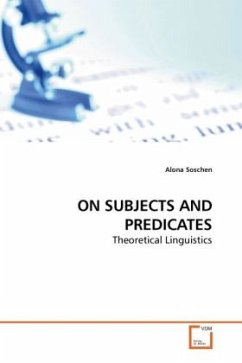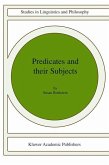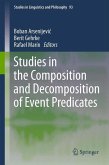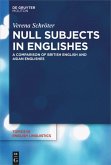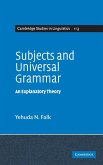ON SUBJECTS AND PREDICATES Dr. Alona Soschen recently completed her post- doctoral program at the Massachusetts Institute of Technology, Departments of Linguistics and Cognitive Sciences. Prior to that, this book was submitted in the form of dissertation to the Department of Linguistics, University of Ottawa, in partial fulfillment of the requirements for the Degree of Doctor of Philosophy. The book discusses relevant linguistic theories concerning subject positions and predication relations. The conclusions are supported by extensive data from four language groups: Slavic, Romance, Germanic, and Semitic. The aim of this interdisciplinary approach to the study of predication is to integrate cognitively based lexical semantics and formal analyses with relation to philosophy and logic of language. The present study employs case and predication theories in a way of relating semantic components to formal syntactic descriptions. A new approach to sentential structure is offered in light of the most recent developments within the framework of Chomsky s Minimalist Program.
Bitte wählen Sie Ihr Anliegen aus.
Rechnungen
Retourenschein anfordern
Bestellstatus
Storno

